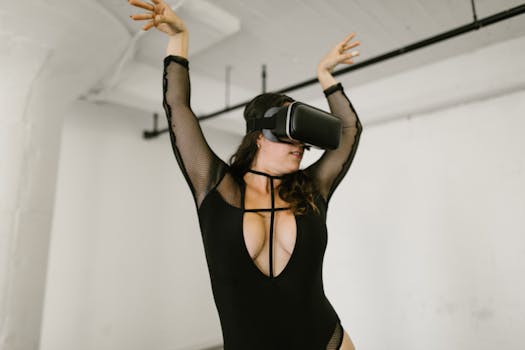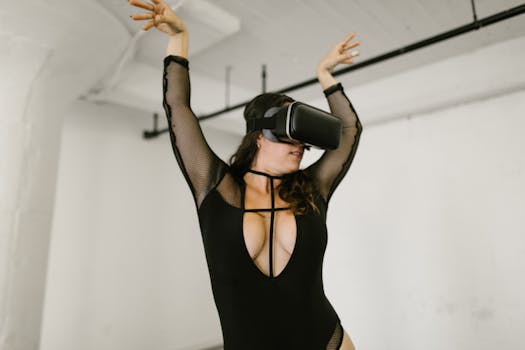Anúncios
The future of dance communities in the United States is an exciting topic to explore, as these communities have evolved tremendously over the past decades. Dance is not merely an art form; it serves as a powerful means of connection and expression. As trends evolve and technology advances, the way these communities function and engage with members will also transform.
With the rise of social media and digital platforms, dancers now have unprecedented access to a global audience. This access has birthed new forms of dance communities that thrive on creativity, inclusivity, and collaboration. As we delve deeper into this subject, it’s essential to examine the myriad factors shaping the future of these communities.
From breaking down geographical barriers to fostering inclusivity, the future of dance communities looks bright. The following sections will explore various aspects impacting these communities, including technology, inclusion, local versus global dynamics, sustainability, and the role of education.
The Role of Technology in Dance Communities
Technology plays a pivotal role in shaping modern dance communities. Social media platforms such as Instagram, TikTok, and YouTube have become windows for dancers to showcase their skills and connect with audiences.
Live-streaming and virtual classes have emerged due to demand, particularly during the pandemic. These options offer flexibility and accessibility that traditional classes might not provide, broadening community participation.
Anúncios
Moreover, mobile applications for dance enthusiasts are gaining popularity. These apps foster connections between dancers, enabling them to form groups, share routines, and even collaborate on projects.
As technology continues to evolve, innovations such as virtual reality (VR) are likely to impact dance practices. This will allow for immersive learning experiences and unique avenues for performance.
Ultimately, technology will serve to enhance connections within dance communities, fostering a sense of belonging among members despite physical distances. The fusion of creativity and tech will be key to the future’s coexistence.
Anúncios
The Importance of Inclusion in Dance
Inclusivity is increasingly recognized as a core value in dance communities. As the industry develops, there is a growing awareness that dance should be accessible to all, regardless of ability, background, or identity.
Many communities are now actively promoting equity by providing diverse dance styles and encouraging participation from underrepresented groups. This active outreach will enrich collective experiences and broaden perspectives.
Additionally, setting up platforms for marginalized voices allows dancers to express their stories. This creates a richer, more vibrant community atmosphere that honors varied experiences, strengthening bonds among participants.
Learning about different cultures and dance forms fosters respect and appreciation. As communities become increasingly diverse, the integration of various dance styles will continue to flourish, enhancing overall creativity.
Fostering inclusive environments will not only help in individual growth but also contribute to building a sense of belonging among all members. This will solidify the foundation of future dance communities.
The Balance Between Local and Global Influence
Dance communities are often rooted in local culture, but globalization is significantly impacting their dynamics. Artists are increasingly blending styles, sharing techniques, and accessing global influences, enhancing local offerings.
Local communities can celebrate distinct cultural heritages, giving identity, while simultaneously adapting to global trends. This balance encourages innovation, making each community unique while still connected to a broader narrative.
Digital platforms open avenues for dancers in different regions to share and learn from one another. This exchange inspires collaboration and empowers members to grow their skills beyond geographical boundaries.
However, it is crucial for dance communities to retain their local essence. This contributes to a sense of belonging and ensures that traditional forms are preserved, merging old and new seamlessly.
In essence, the relationship between local roots and global influences will shape the evolution of dance communities. Striking the right balance will ensure a vibrant and enriching future.
Creating Sustainable Dance Communities
Sustainability is becoming a priority for dance communities in the U.S. As awareness of environmental issues grows, many organizations are adopting eco-friendly practices and promoting conscious consumption.
Workshops and performances that prioritize sustainable materials, energy-efficient venues, and waste reduction are emerging across various groups. These practices encourage members to be mindful of their impact on the environment.
In addition, fostering sustainable communities involves promoting mental and physical well-being. Accessible programs that encourage participation and cater to all skill levels create healthier environments.
Financial sustainability is another crucial aspect. Community support systems, fundraising initiatives, and partnerships with local businesses can bolster opportunities and resources for dancers, ensuring longevity.
Implementing sustainable practices will help nurture and support not just dance communities, but the planet as a whole. Building a legacy centered on sustainability will benefit future generations of dancers.
The Role of Education in Future Dance Communities
Education in dance is essential for nurturing talent and strengthening communities. Dance schools, workshops, and informal gatherings serve as foundations for sharing knowledge and learning new styles.
Innovative educational programs that include both technical skills and soft skills will prepare dancers for diverse challenges. This holistic approach encourages adaptability and fosters personal growth.
Furthermore, partnerships with schools and local organizations can help introduce dance to younger generations. This involvement can spark interest and enthusiasm for dance, expanding community engagement.
Online courses and virtual workshops also provide opportunities for self-paced learning. This accessibility allows dancers to tailor their education to individual needs, creating lifelong learners within the community.
Ultimately, the future of dance communities depends significantly on ongoing education and resource availability. Continuous learning will ensure vibrant communities that thrive on innovation and creativity.
A Look at Emerging Trends in Dance Communities
New trends keep dance communities evolving, making them dynamic spaces for creativity. The explosion of social media challenges has inspired dancers to showcase unique moves and styles, bringing communities together.
The integration of fitness and dance has also gained momentum, attracting diverse participants and broadening appeal. Dance classes emphasizing health and wellness have become more commonplace, encouraging attendees to maintain an active lifestyle.
Furthermore, interdisciplinary collaborations are emerging, blending dance with theater, visual arts, and even technology. This fusion creates unique experiences that appeal to wider audiences and fosters creative cooperation.
As communities adapt to the latest trends, they remain vigilant in preserving their cultural roots while experimenting with innovations. This willingness to grow will keep them relevant and engaging.
Keeping an eye on emerging trends will be vital for those involved in dance communities. Adapting to change makes it possible for dancers to participate in an ever-evolving landscape.
Conclusion
The future of dance communities in the United States appears bright and promising, driven by technology, inclusivity, local-global dynamics, sustainability, education, and emerging trends. Embracing these components will lead to richer, more diverse experiences for all participants.
Fostering connections, celebrating diversity, and supporting innovation will ensure these communities remain vibrant and relevant. As they navigate the challenges and opportunities ahead, the heart of dance will always be about connection, expression, and joy.
In closing, those involved in these dance communities have a unique opportunity to shape a future that values creativity, collaboration, and growth, continuing the legacy of dance for generations to come.
| Aspect | Description |
|---|---|
| Technology | Advances in social media and streaming create new avenues for connection. |
| Inclusion | Active efforts to engage underrepresented groups and promote equity. |
| Local vs Global | Maintaining local culture while embracing global influences enhances community richness. |
| Sustainability | Implementing eco-friendly practices fosters environmental awareness and community longevity. |
| Education | Ongoing learning through workshops and partnerships nurtures talent and skills. |
| Emerging Trends | Collaboration across disciplines and fitness integration expands community appeal. |
- Embrace technology for improved connections.
- Foster inclusive environments for diverse voices.
- Balance local roots with global influences.
- Implement sustainable practices to cultivate longevity.
- Encourage education for continued growth.
- Monitor emerging trends for community engagement.



